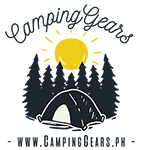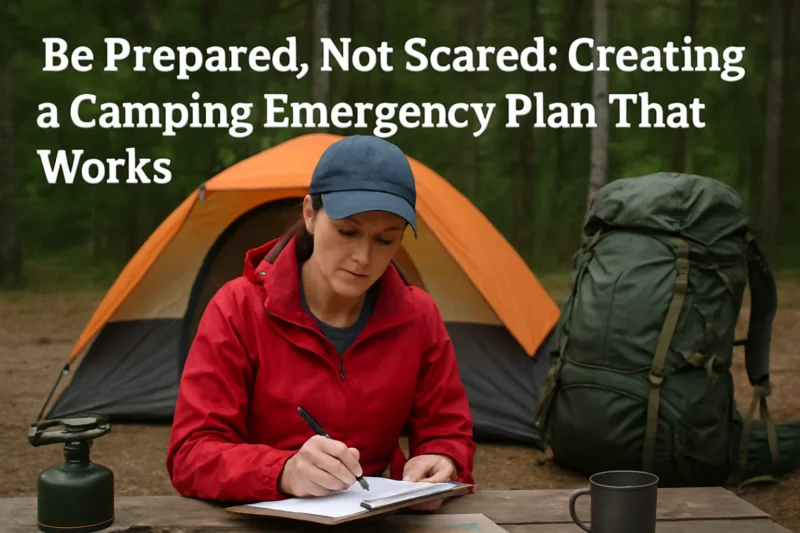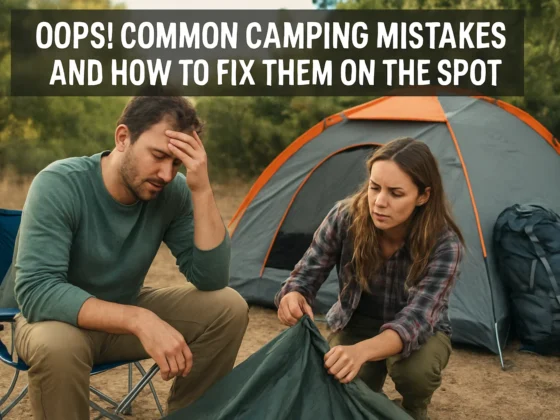Introduction: Safety Starts Before the First Step
Camping offers an escape from the demands of daily life, but as any experienced outdoorsman will tell you, nature can be unpredictable. One moment you’re enjoying a quiet sunset, the next you’re scrambling to secure gear before a sudden downpour.
It doesn’t matter if you’re trekking deep into the Cordilleras, camping by a Palawan shoreline, or setting up near a family-friendly spot in Batangas—emergencies can happen anywhere.
A well-prepared emergency plan ensures that when challenges arise, you’re ready to act calmly, quickly, and effectively. It’s not about expecting disaster—it’s about being capable of handling one.
Why Every Camper Needs an Emergency Plan
Even the most prepared hikers and campers face situations they can’t control: unexpected storms, injuries, illness, or getting lost. Without a plan, these incidents can escalate quickly.
An emergency plan helps by:
-
Eliminating guesswork when every second counts.
-
Keeping group members coordinated, even in high-stress situations.
-
Ensuring vital supplies are on hand for survival and recovery.
-
Providing peace of mind so you can enjoy your trip more fully.
Think of it as carrying an invisible shield: you hope you never have to use it, but you’re grateful to have it when needed.
Step 1: Research Your Destination Thoroughly
Preparation begins long before you arrive.
-
Weather Forecasting: Check daily and extended forecasts for your exact location. Tropical areas can shift from sunny to stormy in minutes.
-
Terrain Familiarity: Know if you’ll be dealing with steep slopes, rocky paths, muddy trails, or rivers that may rise after rain.
-
Access Points: Learn about multiple entry and exit routes in case your primary path becomes blocked.
-
Nearest Help: Identify the location and distance of hospitals, ranger stations, and local emergency numbers.
-
Wildlife Awareness: Research potential animal encounters and how to avoid conflict—especially if camping in areas known for snakes, wild boar, or monkeys.
Step 2: Assemble a Comprehensive First Aid Kit
Your kit should go beyond basic bandages. Include:
-
Sterile gauze pads and adhesive tape
-
Alcohol swabs and antiseptic solution
-
Pain relievers and anti-inflammatory tablets
-
Antihistamines for allergies or insect stings
-
Burn ointment and cold packs
-
Tweezers for splinter or tick removal
-
A CPR mask and disposable gloves
-
Personal medications (in waterproof packaging)
Pro Tip: Assign one person to be the “kit custodian” so it doesn’t get misplaced.
Step 3: Bring Essential Survival Gear
Certain tools can make all the difference during an emergency:
-
Emergency blankets or bivvy sacks for warmth
-
Multipurpose knife or multitool
-
Whistle for signaling over distance
-
Waterproof flashlight or headlamp with extra batteries
-
Waterproof matches or a reliable firestarter
-
High-calorie rations that require no cooking
-
A compact cooking solution like a Superkalan burner to boil water and prepare meals when the weather is harsh or campfires are prohibited
Having a superkalan burner ensures you can safely prepare hot food or sterilize water even during heavy rain or when natural fuel sources are scarce.
Step 4: Establish Communication Plans
Cell reception is not guaranteed in remote areas. Prepare alternatives:
-
Two-way radios for campsite-to-trail communication
-
Satellite messengers for SOS alerts and location sharing
-
Pre-arranged check-in times with someone at home
-
A written itinerary left with a trusted contact, detailing your route, group size, and return date
Step 5: Assign Roles Within the Group
Clear responsibilities speed up decision-making:
-
Leader: Makes the final call during emergencies
-
Navigator: Tracks route and ensures group stays on course
-
Medical Lead: Administers first aid and monitors health conditions
-
Logistics Manager: Manages food, water, and gear access
If camping solo, mentally assign yourself these roles and keep a checklist to stay organized.
Step 6: Plan Shelter and Evacuation Strategies
Emergencies sometimes require moving fast:
-
Identify high ground nearby in case of flash floods.
-
Mark alternative trails and exits on your map.
-
Choose tent locations away from riverbanks, unstable cliffs, or beneath large overhanging branches.
-
Keep gear packed and organized at night so you can grab and go if needed.
Step 7: Secure Food and Water Safety
Clean water and food are survival priorities:
-
Purify water through boiling, filtration, or chemical tablets.
-
Store food in airtight containers to deter animals.
-
Avoid handling food with dirty hands to prevent illness.
Your portable cooking gear is vital here—whether reheating pre-cooked meals or boiling collected water to make it safe for drinking.
Step 8: Practice Drills Before the Trip
A written plan is good, but practice cements it into memory:
-
Time how fast you can set up an emergency shelter in the rain.
-
Run mock scenarios where a group member “injures” themselves and must be assisted.
-
Practice locating critical gear in the dark.
Step 9: Keep Calm Under Pressure
Emergencies trigger stress, but panic clouds judgment. Remember STOP:
-
Stop: Pause and steady yourself.
-
Think: Assess your options.
-
Observe: Gather information about your surroundings and group.
-
Plan: Take the safest and most logical course of action.
Common Mistakes in Emergency Planning
Even experienced campers make these errors:
-
Over-relying on technology without a manual backup (maps, compasses)
-
Failing to waterproof critical gear
-
Skipping a pre-trip gear inspection
-
Not telling anyone your itinerary
-
Assuming “it won’t happen to me”
Avoiding these mistakes is as important as making the plan itself.
Quick-Access Emergency Checklist
Before leaving, make sure you can tick off every item on this list:
-
First aid kit (complete and accessible)
-
Waterproof matches/lighter
-
Emergency blanket/bivvy
-
Map and compass
-
Portable stove or Superkalan burner
-
High-energy food rations
-
Spare clothing layers
-
Whistle and signaling device
-
Power bank for communication devices
-
Written emergency contacts and itinerary
Final Thoughts: Preparedness Is Part of the Adventure
An emergency plan isn’t meant to create fear—it’s meant to create freedom. Knowing you have the right gear, skills, and information allows you to explore with confidence.
The outdoors will always hold surprises. But with a solid plan, you turn the unknown from a source of anxiety into part of the adventure.



